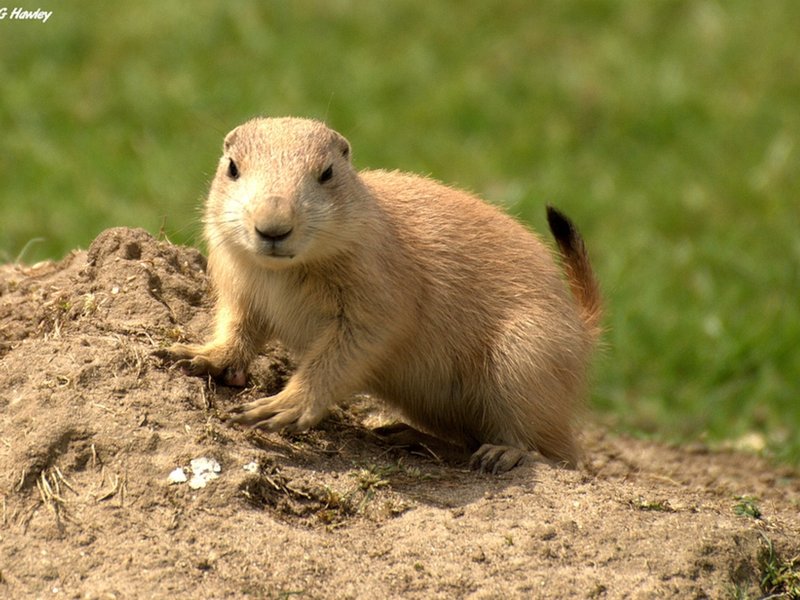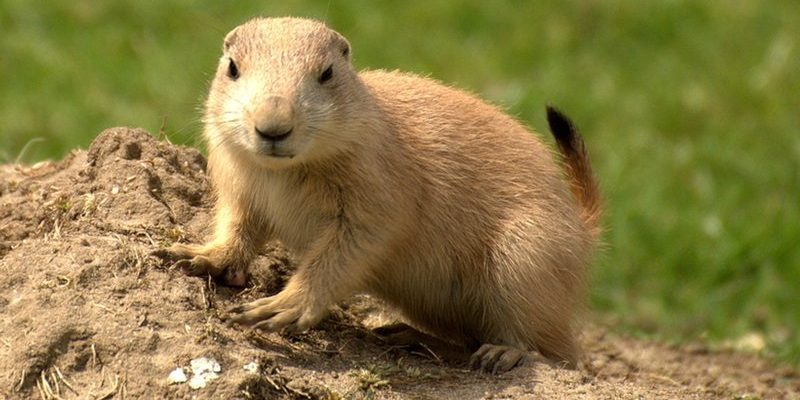
You might be wondering how they manage to navigate extreme weather, predators, and scarce resources. Well, prairie dogs have developed a variety of clever techniques and behaviors to help them not just survive, but thrive. Let’s dig into how these remarkable animals adapt to their sometimes unforgiving surroundings.
One of the most impressive aspects of prairie dog survival is their burrow system. Think of their underground homes as a multi-level apartment complex, complete with different rooms for various purposes. These burrows can extend up to 30 feet deep and have multiple entrances, providing safety from predators like coyotes and hawks.
Inside, prairie dogs create chambers for sleeping, storing food, and even doing their business. This not only helps keep their living space clean but also maintains a stable temperature. On hot days, their burrows can be blissfully cool, while on chilly nights, they offer warmth. It’s a cozy little world down there, designed by nature’s architects for maximum comfort and safety.
Burrow Benefits:
- Protection: Burrows keep prairie dogs safe from predators.
- Temperature Control: They regulate their living environment against extreme temperatures.
- Community Living: Prairie dogs often share their burrows, promoting social bonds and support.
Social Structures and Communication
Prairie dogs aren’t just solitary creatures; they live in large groups called colonies. This social structure is vital for their survival. Imagine living in a small neighborhood where everyone looks out for one another—that’s how prairie dogs operate. They communicate through an elaborate system of barks and chirps to alert each other of danger.
This social aspect is so crucial that prairie dogs engage in behaviors like *sentinel duty,* where one or more individuals stand guard while others forage for food. This way, they can keep an eye out for any approaching predators. If one of them spots danger, they’ll let out a specific call that tells the others exactly what type of threat is coming.
Key Communication Points:
- Distinct Sounds: Each call indicates different types of danger.
- Sentinel Behavior: Guarding the colony while others are busy.
- Social Bonds: Helping each other increases survival chances.
Adapting to Climate Challenges
Prairie dogs inhabit areas with fluctuating temperatures, from scorching summers to frigid winters. To cope with these challenges, they’ve developed some pretty nifty survival strategies. During the hottest months, prairie dogs tend to be more active in the cooler mornings and evenings, avoiding the scorching midday sun.
In winter, they enter a state similar to hibernation. While they don’t completely shut down like bears, they do slow their metabolism and stay deeper in their burrows. They rely on the food they’ve stored throughout the warmer months, munching on dried grass and roots. This combination of behavioral adaptation and resourcefulness is key to thriving in a challenging environment.
Seasonal Survival Techniques:
- Time of Activity: Avoiding the heat by being active when it’s cooler.
- Metabolic Slowdown: Conserving energy in winter.
- Food Storage: Stocking up in good times to survive the bad.
Predator Awareness and Defense
Living in the wild means predator encounters are a part of life for prairie dogs. But they don’t just sit back and hope for the best. These little guys have a fully-fledged defense system in place. Their burrows, as mentioned earlier, offer a safe haven, but they also take to their feet when needed.
When a predator approaches, prairie dogs will often freeze in place to avoid detection, blending into their surroundings. If spotted, they’ll dash back to their burrows. Their social calls not only warn other prairie dogs but can also confuse predators by creating chaotic movement among the colony.
Predator Defense Strategies:
- Camouflage: Remaining still to blend into the surroundings.
- Quick Retreats: Dashing for safety when spotted.
- Alarm Calls: Communicating danger effectively within the colony.
Diet: Eating Smart for Survival
Prairie dogs are herbivores, mainly munching on grasses, seeds, and roots. Their eating habits are closely tied to their environment, so they’ve adapted their diet based on what’s available. During the spring and summer, they feast on tender green shoots, which are plentiful and nutritious.
When resources get scarce, especially in winter, prairie dogs rely on their stored food. They have a unique ability to eat certain plants that may be toxic to other animals. This not only helps them thrive but allows them to access food sources that others can’t. It’s like having a secret menu in a restaurant that only they know about!
Dietary Adaptations:
- Herbivorous Diet: Focusing on grasses and seeds for nutrition.
- Resourcefulness: Eating plants that other animals avoid.
- Food Storage: Stockpiling during abundant times for tougher periods.
Coexisting with Ecosystems
One fascinating aspect of prairie dogs is their role within the ecosystem. They aren’t just surviving; they’re actively contributing to their environment. Their burrowing activity aerates the soil, which can improve plant growth for other species. Plus, their colonies provide habitats for other animals, like burrowing owls and snakes, creating a balanced ecosystem.
You might not think of prairie dogs as the life of the party, but they really are the unsung heroes of the grasslands. Their presence supports a more diverse array of life, showcasing how interconnected all species are—even the tiniest ones.
Ecosystem Contributions:
- Soil Aeration: Helping plant life flourish through burrowing.
- Habitat Creation: Offering shelter for other animals.
- Food Source: Acting as prey for various predators.
In conclusion, prairie dogs are a shining example of how animals can adapt to survive in tough environments. From their intricate burrows to their social structures and clever diet choices, these little creatures have honed their skills over thousands of years. They remind us that even in the harshest conditions, life finds a way, evolving and thriving against the odds. Next time you see a prairie dog, consider how much more is happening beneath the surface. Their story is one of resilience, community, and the beauty of nature’s design.

